This post may contain affiliate links. Please see our disclosure policy.
Canning whole tomatoes in red wine is a simple twist on a classic canning recipe, adding rich, complex flavor to your home canned tomatoes.
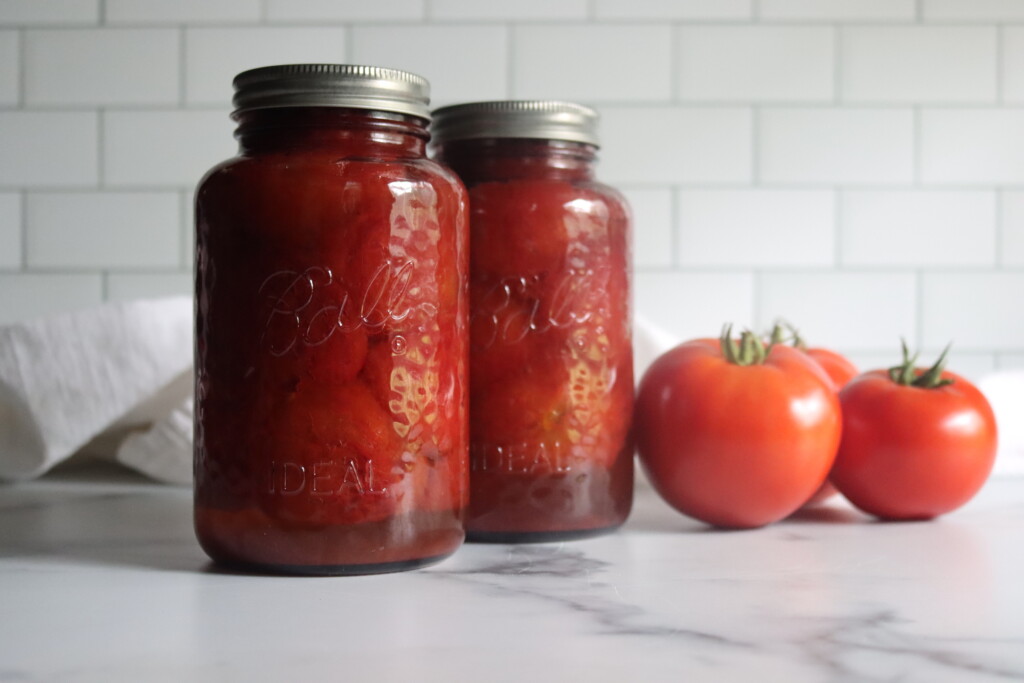
Canning whole tomatoes in red wine is a simple twist on a classic home canning recipe. It follows the same tested method used for canning whole tomatoes in water, but with one flavorful substitution—wine takes the place of plain water as the packing liquid. That small change adds incredible depth and complexity to the finished jars, without altering any of the canning safety procedures. Since wine is actually more acidic than water, it’s a safe alternative in this case, provided you still follow the standard acidification rules required for tomatoes.
Tomatoes are a borderline-acid food, and no matter how you preserve them—whether in water, tomato juice, or wine—they still need added bottled lemon juice or citric acid to lower the pH and ensure they’re safe for either water bath or pressure canning. That requirement doesn’t change just because you’re using wine. Fortunately, it’s a small step that makes home-canned tomatoes shelf-stable and safe for long-term storage.
This particular method uses a hot pack technique, where peeled, cored tomatoes are simmered briefly before being packed into jars. That quick simmer helps drive out trapped air, improve texture, and reduce the chance of floating fruit and liquid separation in the finished jars. You’ll also be adding hot wine to the jars, so working with warm ingredients from start to finish helps prevent thermal shock when filling jars and loading the canner.
Whether you choose a bold red wine to complement hearty dishes or a dry white wine for lighter fare, the result is a jar of tomatoes with incredible versatility and depth of flavor. I like using these in quick tomato sauces, stews, and braises—anywhere you’d normally splash a bit of wine into a dish while cooking. It’s one of those pantry staples that feels gourmet, but it’s still made from nothing more than homegrown tomatoes and a little wine from a bottle you already enjoy drinking.

Ingredients
Here’s what you’ll need to put up tomatoes in wine:
- Fresh tomatoes – You’ll need about 21 pounds for a full canner load of 7 quarts, or 13 pounds for 9 pints. Choose paste-type tomatoes for a thicker result or slicers for juicier jars.
- Red or white wine – Use a dry, drinkable wine with no added sugar. You’ll need 1 cup per quart or ½ cup per pint, plus extra for topping off. Each bottle of wine has about 3 ½ cups of wine, so you’ll need about 2 bottles for a 7 quart batch.
- Bottled lemon juice or citric acid – Tomatoes must be acidified to ensure safe canning. Use bottled lemon juice or citric acid as described below.
- Canning salt (optional) – Add for flavor if desired.
When you’re canning tomatoes in wine, pick something you’d enjoy drinking—but nothing fancy. The wine doesn’t need to be expensive, but it should be dry and free from added sugars or flavors. I usually go with a Côtes du Rhône if I’m planning to use the tomatoes in French-inspired dishes like cassoulet, coq au vin, or a rich beef stew. It adds earthy depth and just the right amount of acidity.
For Italian meals, I prefer a classic Chianti—it’s bright, dry, and holds up beautifully in tomato sauces for pasta or braised meat dishes. Either of those options brings a familiar flavor profile to the final jars without overpowering the tomatoes.
If you’re canning with white wine, try a dry Sauvignon Blanc or Pinot Grigio. They’re especially nice in seafood-based recipes, light sauces, or anything with a Mediterranean feel. Just avoid anything oaky or sweet, as those flavors can come through strongly in the finished jars.
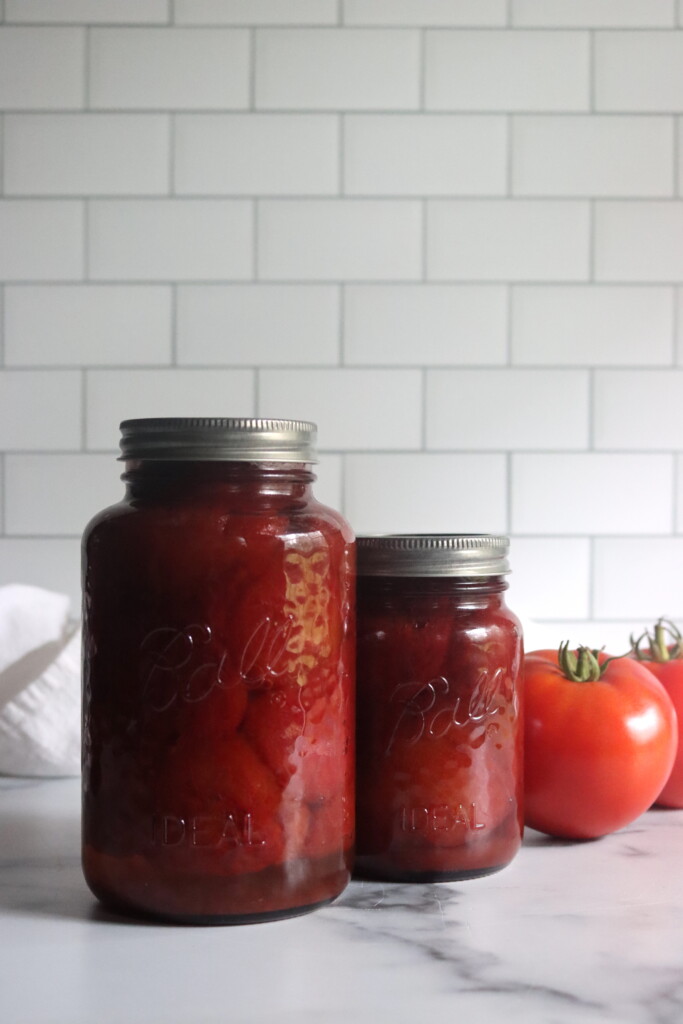
Canning Tomatoes in Wine
Start by washing your tomatoes and removing any stems or blemishes. Score the skin on the bottom of each tomato with a shallow “X” and blanch them in boiling water for 30 to 60 seconds, just until the skins begin to split. Immediately transfer them to a bowl of ice water to cool. Slip off the skins and remove the cores, but leave the tomatoes whole.
Prepare your jars by adding the required acidification: 2 tablespoons bottled lemon juice per quart or 1 tablespoon per pint, added directly to the bottom of each jar. Alternatively, use ½ teaspoon citric acid per quart or ¼ teaspoon per pint. If using canning salt, add 1 teaspoon per quart or ½ teaspoon per pint now.
Add 1 cup of simmering red (or white) wine to each quart jar, or ½ cup per pint. Set the jars aside.
Place the peeled, cored tomatoes in a large pot and add just enough water to cover. Bring to a boil, then simmer gently for 5 minutes to heat through. Using a slotted spoon, pack the hot tomatoes into the prepared jars, leaving ½ inch of headspace. Top off each jar with additional simmering wine or hot water as needed to maintain the ½ inch headspace.
Wipe jar rims, apply lids and bands, and process according to the altitude-adjusted times below.
Altitude Adjustments
This recipe can be processed in either a waterbath canner or pressure canner. Acidification is required either way, so don’t skip the lemon juice.
Boiling Water Bath Canner (Hot Pack Only)
Tomatoes canned in a boiling water bath need longer processing times at higher elevations due to lower boiling temperatures. Be sure to adjust the time based on your altitude:
- 0–1,000 feet: 40 minutes for pints and 45 minutes for quarts
- 1,001–3,000 feet: 45 minutes for pints and 50 minutes for quarts
- 3,001–6,000 feet: 50 minutes for pints and 55 minutes for quarts
- Above 6,000 feet: 55 minutes for pints and 60 minutes for quarts
Pressure Canner (Hot Pack Only)
When using a pressure canner, the processing time stays the same (15 minutes), but the pressure must increase with elevation to maintain safe internal temperatures.
Dial Gauge Pressure Canner (Process pints or quarts for 15 minutes):
- 0–2,000 ft: 6 lbs
- 2,001–4,000 ft: 7 lbs
- 4,001–6,000 ft: 8 lbs
- 6,001–8,000 ft: 9 lbs
Weighted Gauge Pressure Canner (Process pints or quarts for 15 minutes):
- 0–1,000 ft: 5 lbs
- Above 1,000 ft: 10 lbs
Serving Suggestions
Tomatoes canned in red wine are ideal for winter cooking when you want big flavor without opening multiple bottles. Use them straight from the jar in pasta sauces, braised meats, or hearty stews. The wine doesn’t make the tomatoes taste boozy—it simply deepens the flavor, like a splash of wine in a simmering ragù.
You can blend them into tomato soup or reduce the contents of the jar on the stovetop to make a quick pan sauce. If you’re canning with white wine, they also pair well with seafood dishes or delicate pasta sauces.

Canning Tomatoes in Wine
Equipment
- Pressure Canner optional, this is also tested as a waterbath recipe
Ingredients
- 21 lbs fresh tomatoes, for 7 quarts or 13 lbs (for 9 pints)
- 2 bottles Wine, red or white wine, 1 cup per quart or ½ cup per pint, plus extra for topping
- Bottled lemon juice, 2 Tbsp/quart or 1 Tbsp/pint or citric acid (½ tsp/quart or ¼ tsp/pint)
- Optional: 1 tsp canning salt per quart or ½ tsp per pint
Instructions
- Prepare the tomatoes: Wash tomatoes thoroughly. Bring a large pot of water to a boil. Score a shallow “X” on the bottom of each tomato and blanch them in the boiling water for 30–60 seconds, just until the skins split. Transfer immediately to ice water. Slip off skins and remove cores. Leave tomatoes whole or cut into halves (do not chop or crush—this method is only tested for whole or halved tomatoes).
- Prepare jars: Wash jars, lids, and bands. Keep jars hot until ready to use. To each pint jar, add 1 tablespoon bottled lemon juice (or ¼ teaspoon citric acid). To each quart jar, add 2 tablespoons bottled lemon juice (or ½ teaspoon citric acid). If desired, add ½ teaspoon salt per pint or 1 teaspoon per quart for flavor.
- Add wine: Pour ½ cup of simmering wine into each pint jar or 1 cup into each quart jar. Set jars aside.
- Hot pack tomatoes: Place peeled, cored tomatoes in a large saucepan and add just enough water to cover. Bring to a gentle boil and simmer for 5 minutes to heat through.
- Fill jars: Using a slotted spoon, pack hot tomatoes into prepared jars. Add more hot wine or water as needed to cover the tomatoes and maintain ½ inch headspace.
- Seal jars: Wipe jar rims with a clean, damp cloth. Apply lids and screw bands until fingertip-tight.
- Process jars: Process in either a boiling water bath canner or a pressure canner using altitude-adjusted times and pressures. See notes for details.
Notes
Altitude Adjustments
This recipe can be processed in either a waterbath canner or pressure canner. Boiling Water Bath Canner (Hot Pack Only) Tomatoes canned in a boiling water bath need longer processing times at higher elevations due to lower boiling temperatures. Be sure to adjust the time based on your altitude:- 0–1,000 feet: 40 minutes for pints and 45 minutes for quarts
- 1,001–3,000 feet: 45 minutes for pints and 50 minutes for quarts
- 3,001–6,000 feet: 50 minutes for pints and 55 minutes for quarts
- Above 6,000 feet: 55 minutes for pints and 60 minutes for quarts
- 0–2,000 ft: 6 lbs
- 2,001–4,000 ft: 7 lbs
- 4,001–6,000 ft: 8 lbs
- 6,001–8,000 ft: 9 lbs
- 0–1,000 ft: 5 lbs
- Above 1,000 ft: 10 lbs
Nutrition
Nutrition information is automatically calculated, so should only be used as an approximation.
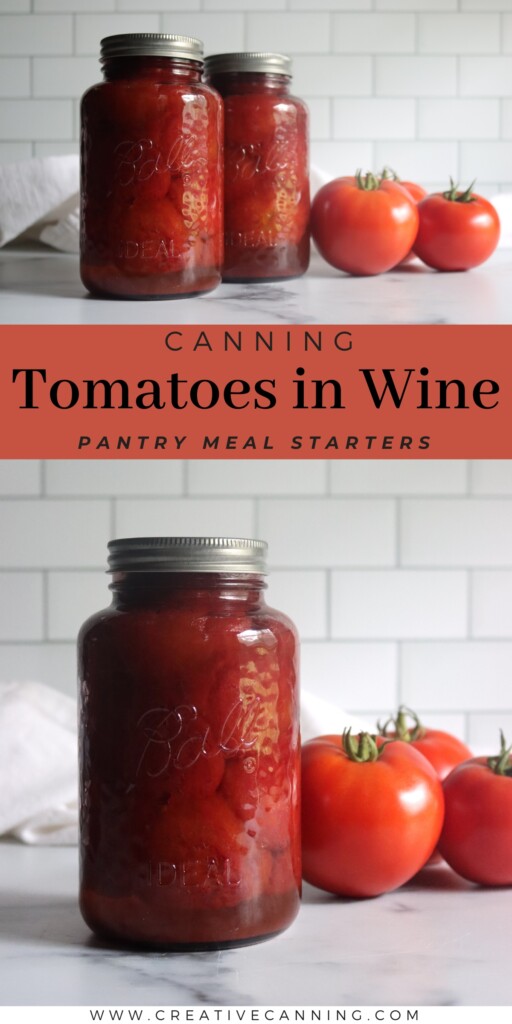
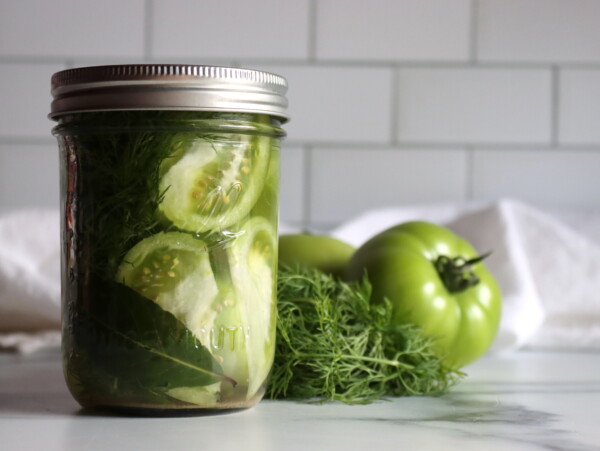

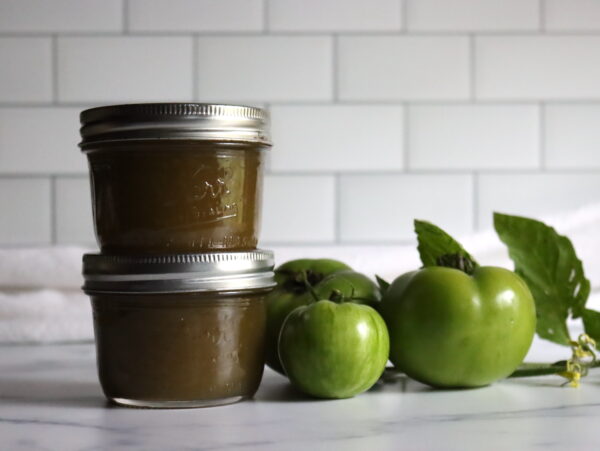
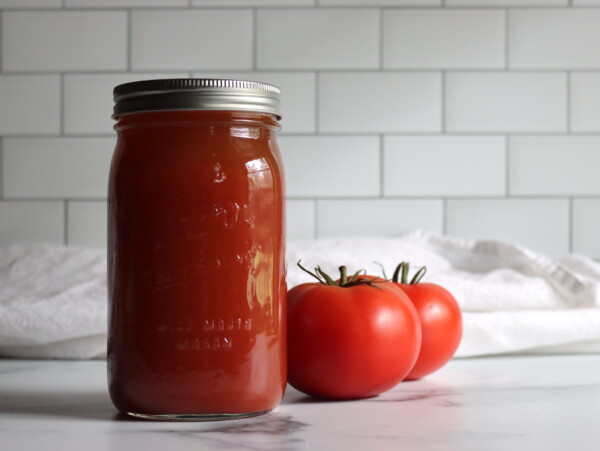
These came out incredible! They have so much more flavor than plain tomatoes canned in water, and they’re perfect for so many of the ways we use home canned tomatoes in the winter months. We use them most often for French style white bean stews and homemade bolognese sauce.